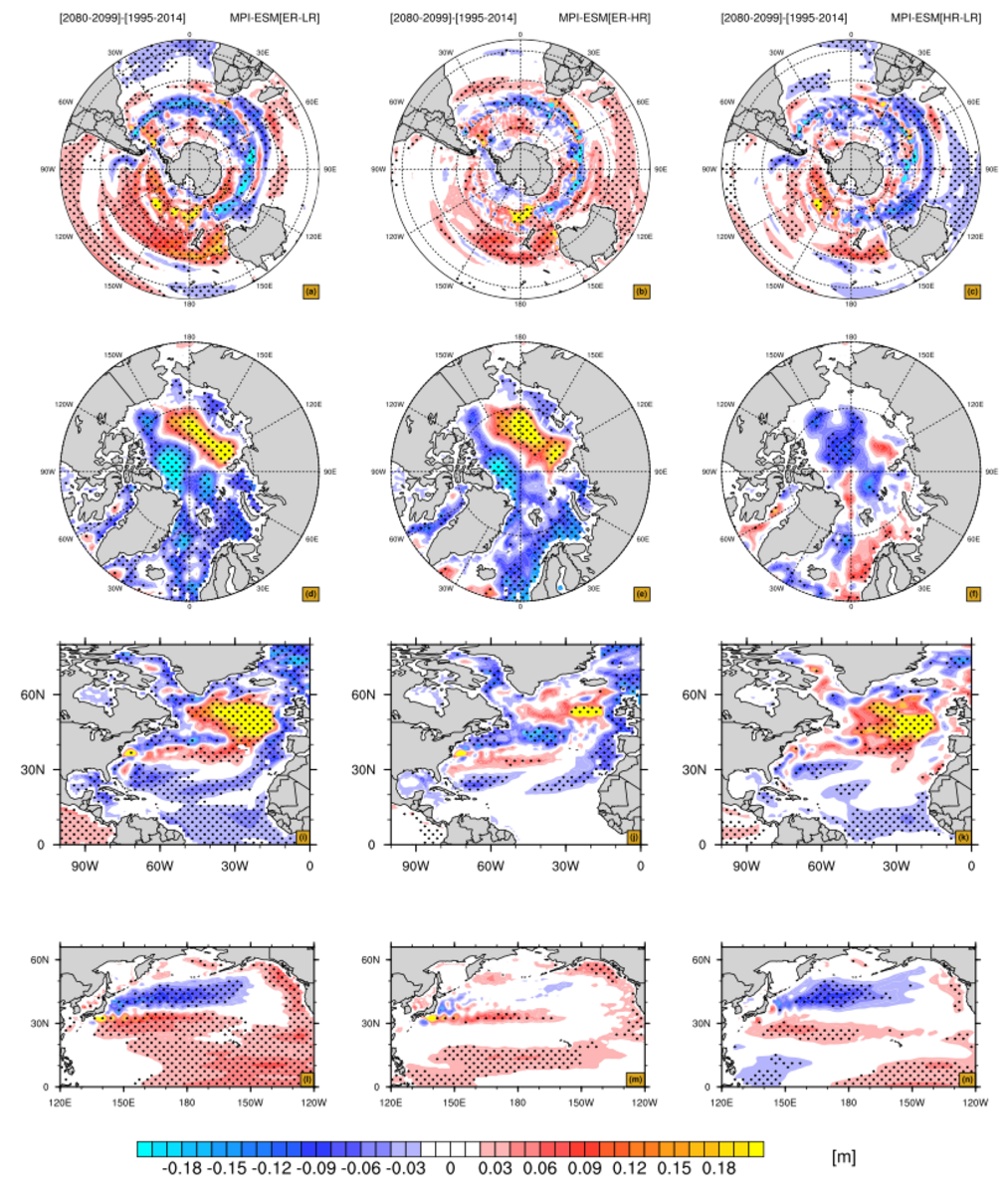Ocean model resolution dependence of sea level change in SSP5-8.5 climate projections in MPI-ESM
by Chathurika Wickramage1, Armin Köhl1, Johann Jungclaus2, and Detlef Stammer1 1Center for Earth System Research and Sustainability (CEN), Universität Hamburg, Hamburg, Germany. 2 Max Planck Institute for Meteorology, Hamburg, Germany.
Figure 01: Dynamic Sea Level change between various resolutions for the ER, HR and LR between the time mean over the years 2080-2099 and time mean over years 1994-2014
Improving reliable sea-level projections is essential for successful adaptation and mitigation investments for policymakers and coastal communities over the following decades.
Sea level change is expected to be more realistic when mesoscale processes are explicitly resolved in the climate models. However, the development of eddy resolving models is computationally expensive. Therefore, current sea level projections are based on climate models in which ocean-eddies are parameterized. The recent representation of sea-level by these models considerably differs from actual observations, particularly in the eddy-rich regions such as the Southern Ocean and the western boundary currents, implying erroneous ocean circulation that affects the sea level projections. Taking this into account, we review the sea-level change pattern in a climate model with featuring an eddy rich ocean model and compare the results to state of the art coarser resolution versions of the same model.
We compare Max Planck Institute Earth System Model (MPI-ESM) simulations with spatial resolution, ranging from Low Resolution (LR), High-Resolution (HR), to Eddy Rich (ER) resolution. For each run the Dynamic Sea Level (DSL) changes are evaluated by comparing the time mean of the SSP5-8.5 climate change scenario for the years 2080–2099 to the time mean of the historical simulation for the years 1995–2014. The differences between each pair of results from the ER, HR, and LR have been examined as the spatial pattern of differences for the DSL change. The analyses are separated geographically, focusing on the North Atlantic, the North Pacific, the Southern and the Arctic Oceans in individual subsections.
Our main conclusions are that the North Atlantic subtropical region, the Kuroshio region, and the Arctic Ocean all show larger sea level changes in the model version that captures mesoscale processes than do models with parameterized eddies. Smaller but still significant changes in sea
level have occurred in the Southern Ocean and the North Atlantic subpolar region.
Our results indicate that the magnitude of regional sea-level change differs in eddy rich to the low-resolution climate models. However, the basic DSL change patterns and dynamics are similar in each ocean basin, suggesting that the low-resolution models will remain valid in understanding the sea-level change patterns. On the other hand, the detailed, qualitative responses essential for adequate adaptation strategies on a regional scale depend on horizontal resolution. Thus, the climate models that represent relatively small-scale ocean eddies can hence have profound large-scale effects on our understanding of future sea-level change as well as on planning future investments to adapt to climate change around the world. The sea-level projections based on low-resolution climate models should be interpreted with great care, predominantly in eddy active regions. Therefore, one should be aware of climate model horizontal resolution when planning future adaptation and mitigation investments.
Reference:
Chathurika Wickramage, Armin Köhl, Johann Jungclaus, and Detlef Stammer (2022). Sensitivity of MPI-ESM sea level projections to its ocean spatial resolution. Submitted to Journal of Climate.

